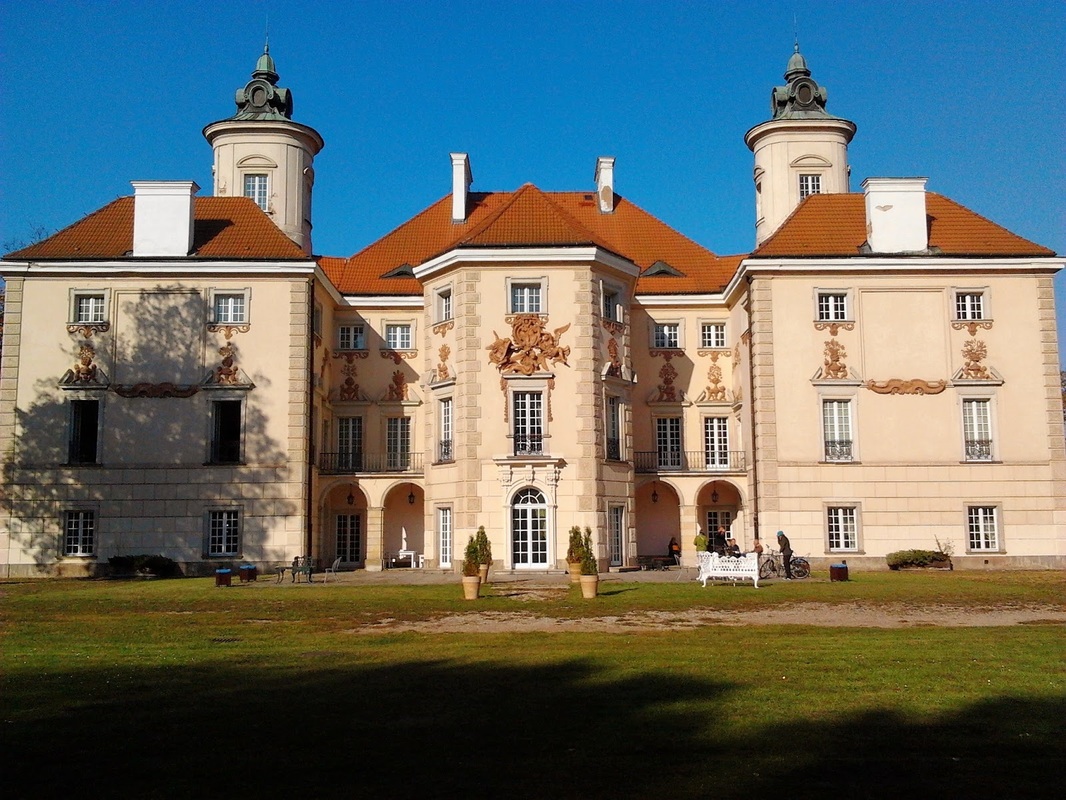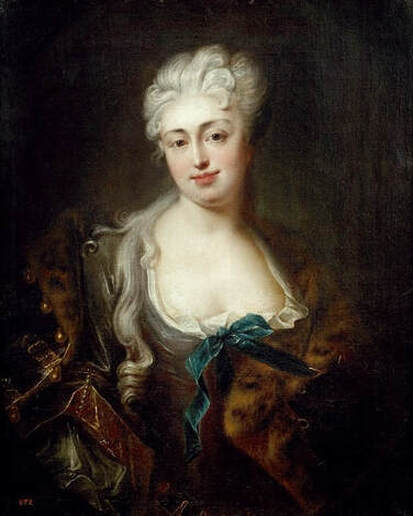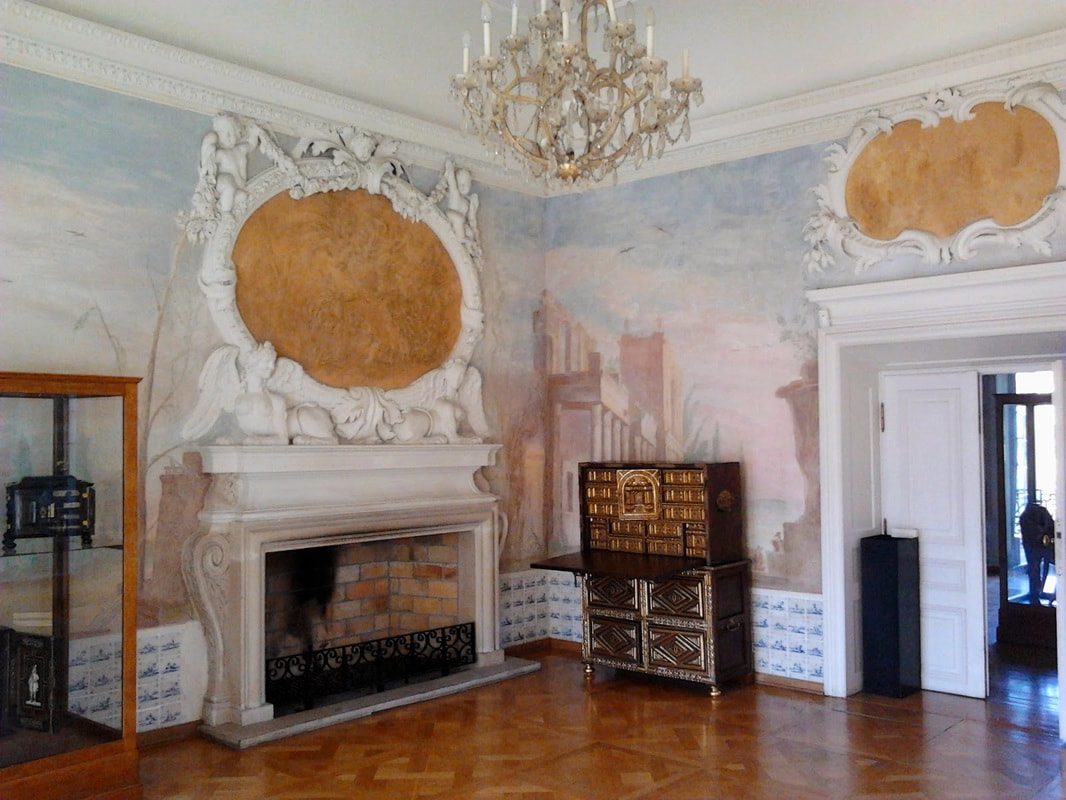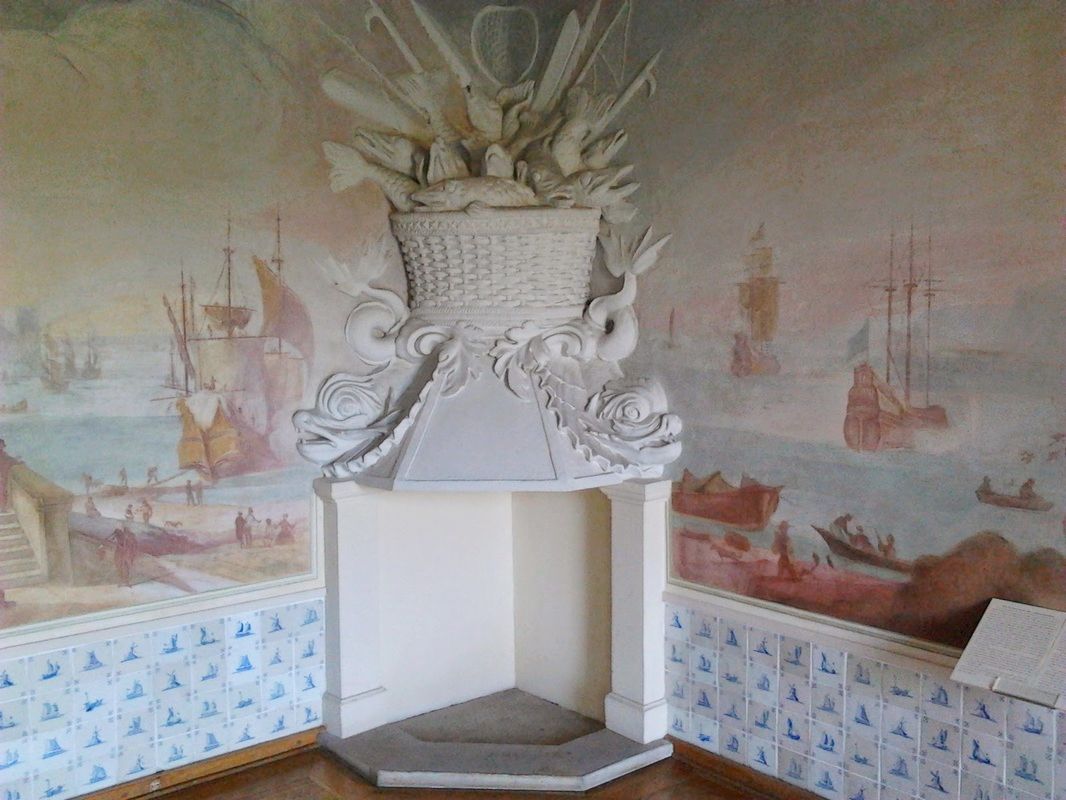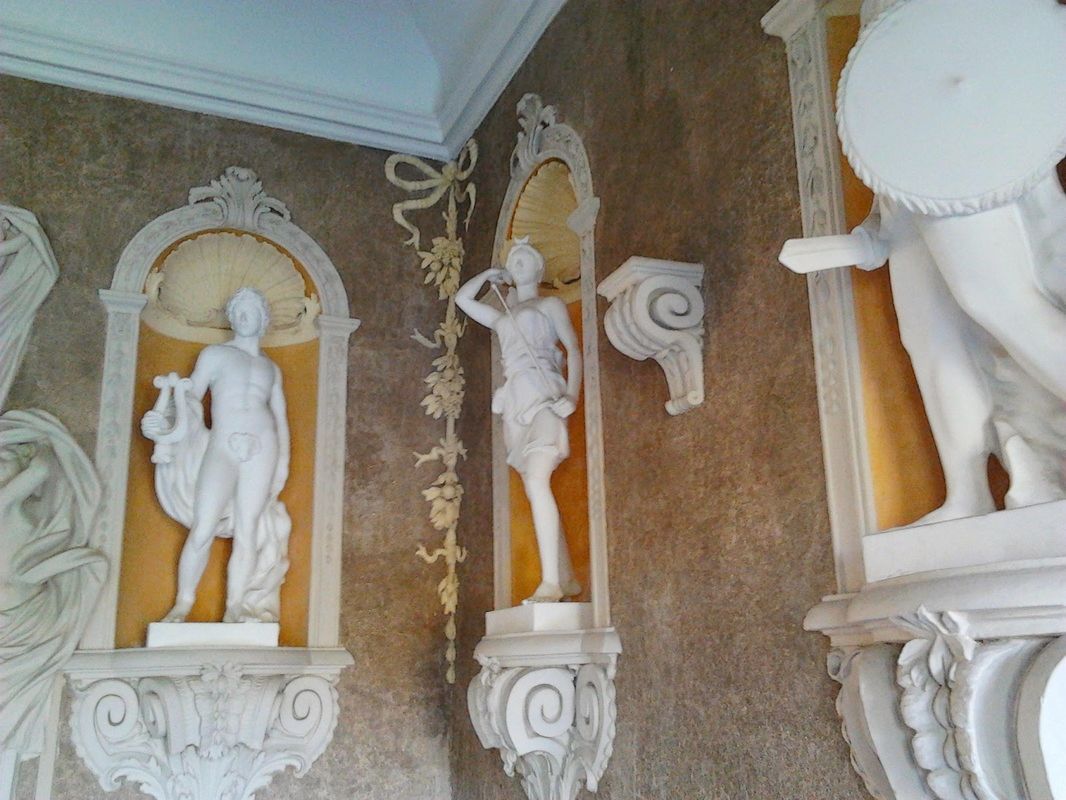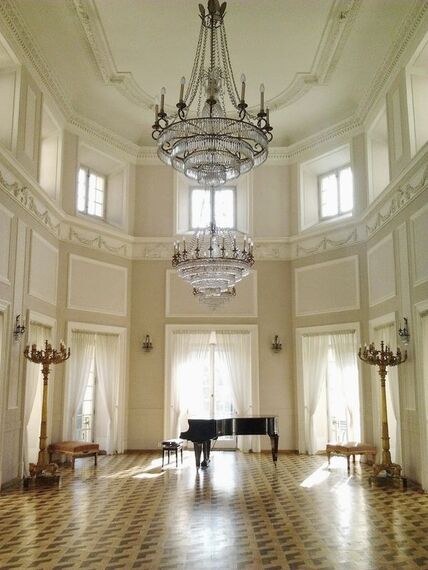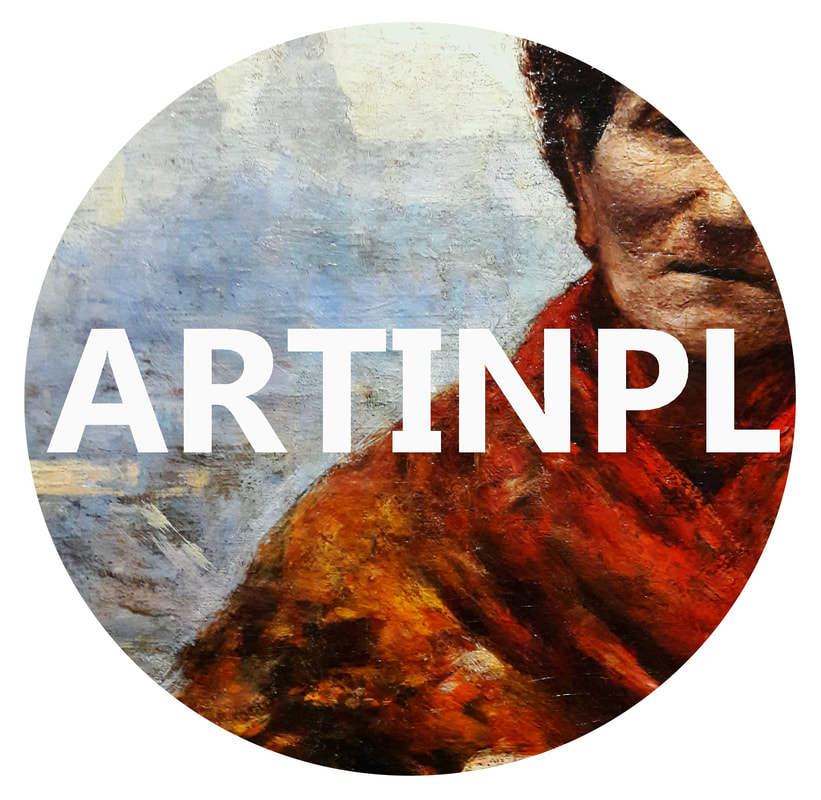|
The Palace in Otwock Wielki was constructed as a summer residence for Bieliński family. The construction started after 1682 at the initiative of Kazimierz Ludwik Bieliński and it was accomplished in about 1689, possibly under supervision of Tylman Gamerski, Carlo Ceroni or Józef Fontana. The main tympanum was adorned with a scene of bacchanal with nymphs, satyrs and God Pan in the center.
The subsequent owner, Franciszek Bieliński, Grand Marshal of the Crown renovated the palace in 1757. The modernization in Rococo style was conducted by Jakub Fontana. At that time the interior was remodelled and adjusted for the purpose of a yearlong living - tile stoves were installed instead of fireplaces in some rooms, the outdoor staircase was demolished and a new one was constructed inside. Also new outbuildings were constructed to house guest rooms, kitchens and rooms for servants. Marianna Bielińska
One of the most renowned of the palace's inhabitants was Marianna Bielińska (c. 1685-1730) - mistress of King Augustus II of Poland. Marianna was a daughter of Grand Marshal of the Crown Kazimierz Ludwik Bieliński, a leader of French party in Poland. His lavish estate in Otwock Wielki was frequented by many state figures including the King himself, who become a lover of his daughter. Soon afterwards Bieliński married his daughter to Bogusław Ernest Denhoff. Despite that Marianna remained King's mistress and eventually divorced Denhoff with Pope's approval. She had a large influence on the King and persuaded him to enter into an alliance with France in 1714. When the new alliance become less beneficial then expected she was dismissed by the King.
Her portrait painted by Ádám Mányoki, along with some other portraits of Royal Mistresses preserved in the Palace on the Water in Warsaw. The Hungarian painter educated in Germany developed his own style and largely influenced the portraiture in Poland. Room of Roman ruins
During the renovation in the second half of the 17th century the palace was adorned in late baroque style. With a certain level of probability the frescoes can be attributed to Tylman Gamerski or his circle, due to similarity to some other works. Although predominantly known as an architect, Gamerski was also a good painter, educated in his native Low Countries and in Venice. Approximately 30% of original decoration was restored after the war.
Initially the room served as a bedchamber for master of the house. The walls were covered with frescoes depicting ancient ruins (colonnades, fountains, gates, arcades, vases) and a wooden panneling to the one sixth of its hight, which was replaced with copies of Dutch tiles after the war. The style of decoration referring to the work of Claude Lorrain was completed with floral and mythological stuccoes in overdoor and above fireplace. Room of marine landscapes
The room was originally an antechamber of Kazimierz Ludwik Bieliński. The preserved frescoes were created during second reconstruction of the palace in the second half of the 17th century and are attributed to Tylman Gamerski. Approximately 75% of the original decoration preserved.
Among elements depicted are two and three masthead boats moored in the port or entering the port, small boats filled with people, lighthouses and the rocky coast. The lower parts of the walls were covered with Dutch tiles. As in the other rooms the decoration included rich stuccos in the form of oval cartouches in overdoor, adorned with shells, acanthus twigs and grass blades. The cartouches were filled with images in sepia (only one of them preserved). Chimney with phoenix
The chimney with phoenix born from ashes, that once adorned the rooms of Ludwika Maria Bielińska, was moved to the staircase. The original decoration of wife's rooms did not preserved.
Vestibule
The vestibule of the Otwock Wielki Palace was initially a representative hall into which the double external staircase led directly from the courtyard. It is one of the 4 rooms of the palace with original decoration.
The semi circular niches supported by richly decorated corbels are the main features. The original Baroque sculptures that filled the niches were destroyed between 1809 and 1828. Present statues depicting mythological deities were executed in 1975 by Stanisław Kulon. The decoration of the vestibule was to resemble an antique grotto and a Palladian Corinthian hall. The walls were covered with a mixture of sand, lime, green glass and granite. The southern wall is filled with a wide semi circular entry into the ballroom framed with stucco decoration in the form a fabric supported by 4 putti and two herms in the form of a semi nude female and male. The herms indicated the initial division of the palace's structure into the wife and husband's space and bears strong resemblance to the owners Ludwika Maria Bielińska and her husband Kazimierz Ludwik. Between 1787 and 1790, Franciszek Bieliński, the palace's owner, has visited Italy several times. During his sojourn in Naples he acquired a collection of 85 teraccotta busts and copies of antique sculptures from the collection of Farnese family and originating from the Pompei and Herculanum excavations. As the collection was intended to be housed in Otwock Wielki, the palace underwent some structural changes inside. Ballroom
The ballroom with a balcony raise at the height of the two stories. The original baroque furnishings and decoration not preserved to our days. The room was adorned after the war with neoclassical stuccos and furnished with 19th century furniture including a pair of Russian candlesticks. External arcade terrases connect the room with husband's and wife's part of the palace.
|
Artinpl is individual, educational project to share knowledge about works of art nowadays and in the past in Poland.
© Marcin Latka Categories
All
Archives
April 2023
|
